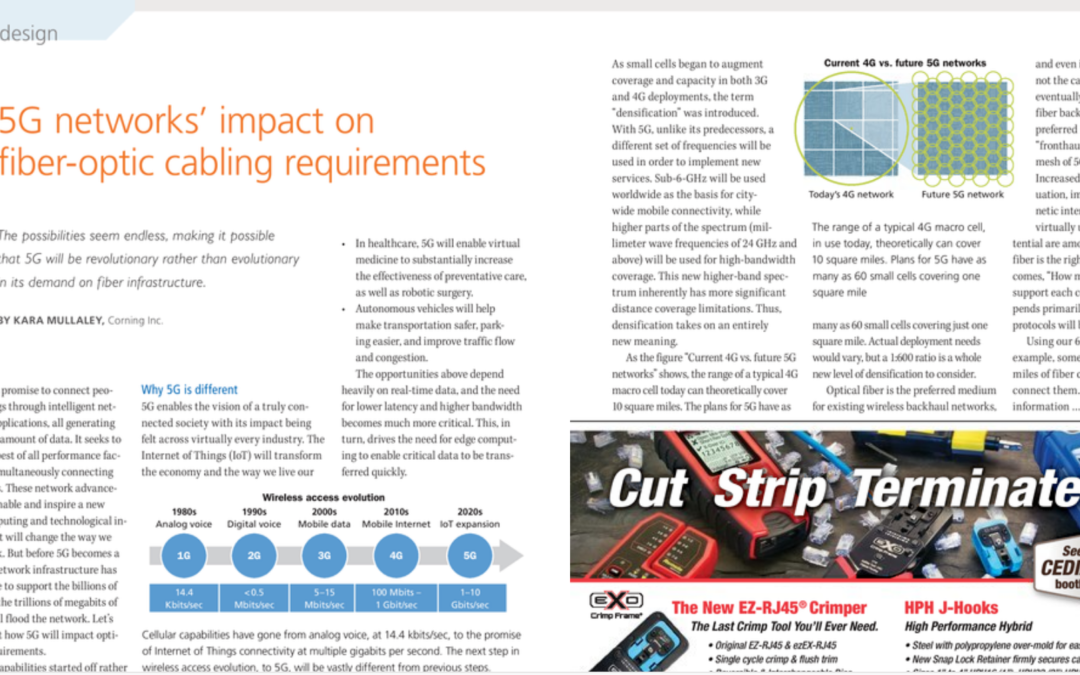5G networks promise to connect people and things through intelligent networks and applications, all generating an immense amount of data. It seeks to provide the best of all performance factors while simultaneously connecting more devices. These network advancements will enable and inspire a new wave of computing and technological innovation that will change the way we live and work. But before 5G becomes a reality, the network infrastructure has to be in place to support the billions of devices and the trillions of megabits of data that will flood the network. Let’s take a look at how 5G will impact optical-fiber requirements.
Cellular capabilities started off rather simply, but as each generation expanded functionality, applications, and services the network infrastructure supporting them has grown increasingly complex. To achieve all that 5G offers, a denser, fiber-rich network infrastructure will be needed to deliver the key performance indicators: lower latency, longer battery life, higher data rates, ultra-high reliability and more connected devices. Read more.
This article, written by Kara Mullaley of Corning, appeared in the August 2018 issue of Cabling Installation & Maintenance.

